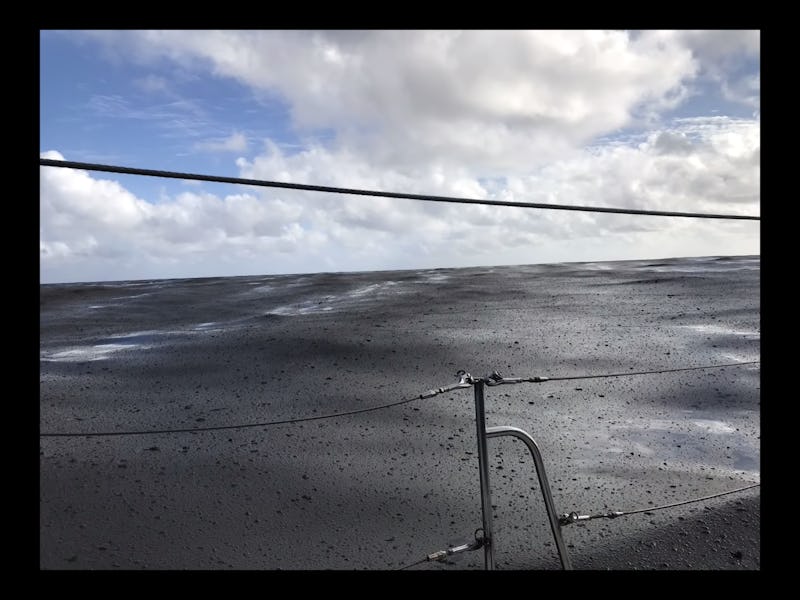A Hitchhiking Rock's Guide to Saving the Great Barrier Reef
A mass of floating rocks the size of Manhattan could be the boost the reef needed.

Sea creatures around Australia are getting a free ride on a massive raft of pumice rock the size of Manhattan. It’s more than just a freaky, mysterious island, though.
Researchers suspect this rock was formed by the same geological phenomenon that may have created the Great Barrier Reef, and some are hopeful that this new one could help repopulate the ailing ecosystem.
NASA satellite imagery shows that the gigantic mass of floating rock first appeared off the coast of an island in the kingdom of Tonga around August 9. NASA reports that the rock likely came from a nearby volcano 130 feet below the surface of the ocean.
The massive pumice float appeared in NASA satellite imagery on August 9 off the coast of Tonga.
Pumice is a porous rock made of silicates that forms out of rapidly cooling magma from volcanoes. And because pumice is full of bubbles, it floats.
“Pumice rafts can drift for weeks to years, slowly dispersing into the ocean currents,” Erik Klemetti, Ph.D., a volcanologist at Denison University, told NASA in a statement. “These chunks of pumice end up making excellent, drifting homes for sea organisms.”
So while the pumice raft floats through the ocean toward Australia, prompting warnings from sailors and some pretty amazing videos, deep ocean creatures like mollusks and corals will be able to latch on, and, scientists speculate, may help repopulate the decimated Great Barrier Reef.
“Each piece of pumice is a rafting vehicle,” Scott Bryan, Ph.D., an associate professor at Queensland University of Technology who studies pumice rafts and coral reefs, said in a news release. “It’s a home and a vehicle for marine organisms to attach and hitch a ride across the deep ocean to get to Australia.”
Bryan speculates that pumice rafts may have helped the Great Barrier Reef form in the first place. But now that climate change and toxic chemical pollutants have caused extensive coral bleaching, the reef is in desperate need of a coral restock.
The Great Barrier Reef is being decimated by climate change, invasive species, and pollutants.
“Based on past pumice raft events we have studied over the last 20 years, it’s going to bring new healthy corals and other reef dwellers to the Great Barrier Reef,” Bryan says. And though he adds that the influx of new life won’t totally rescue the reef, Bryan says the raft appeared at the right time to float through areas where corals tend to spawn late in the year.
However, Terry Hughes, Ph.D., director of the Australian Research Council Center of Excellence for Coral Reef Studies, told The New York Times that corals rarely settle on pumice, and if they did, they wouldn’t jump off onto the reef upon arrival at the Australian coast.
Recent satellite images show the rock raft moving west toward Fiji.
In the Times story, Bryan responded to Hughes’ doubts by clarifying that the coral attached to the pumice could spawn coral larvae into the water, or the pumice rocks could get so heavy with coral growth that they sink to the ocean floor.
Bryan estimates the pumice raft will land on Australian shores in six to eight months. And though the journey may be slow, Bryan is excited for the float’s post-Christmas arrival. He told CNN, “We will have millions to billions of individuals of tens of different species all arriving en masse along our coastline, all healthy and potentially finding a new home.”